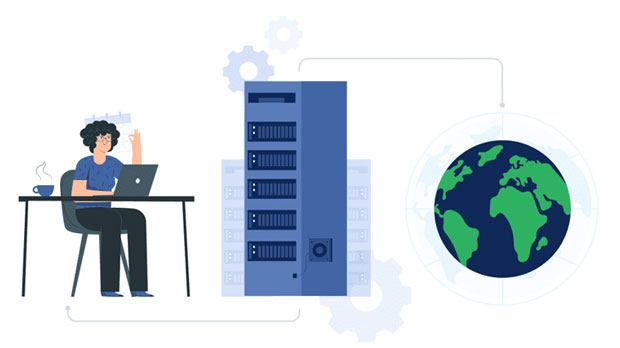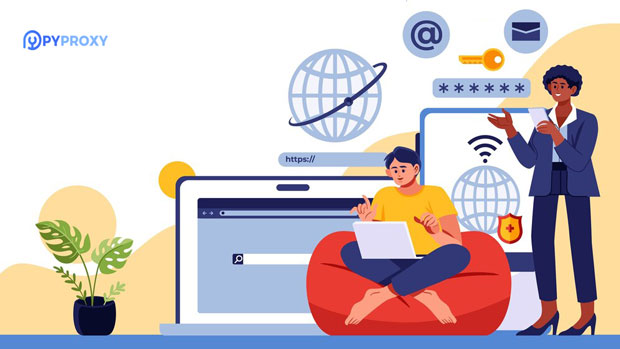A dedicated ip proxy refers to a proxy server that offers a unique, single IP address to an individual user or organization. This IP is exclusive to the user, unlike shared proxies, where multiple users share the same IP address. Dedicated ip proxies provide enhanced privacy, security, and control over internet traffic, making them highly valuable in certain scenarios. They are commonly used for tasks requiring consistency and high performance, such as web scraping, online security, and accessing restricted content. This article will explore the concept of dedicated IP proxies, the benefits they offer, and the specific situations where they are most beneficial. What is a Dedicated IP Proxy?A dedicated IP proxy is a proxy server that assigns a single, static IP address to a particular user or client. This type of proxy allows for greater control and reliability, as the IP address is not shared with others, ensuring the user can maintain a consistent online presence.Unlike shared proxies, which may cause slowdowns and errors due to multiple users sharing the same IP, dedicated IP proxies offer exclusive access. This means that users are less likely to experience IP bans, blacklisting, or performance degradation because their unique IP address is used only by them.Dedicated IP proxies can be beneficial for a variety of use cases where anonymity, security, or access to specific content is required. They are used across various industries, from businesses needing to manage their network to individuals seeking greater privacy while browsing the internet.How Do Dedicated IP Proxies Work?A dedicated IP proxy acts as an intermediary between the user and the internet. When the user requests a webpage, their request is sent to the proxy server instead of directly to the website. The proxy then forwards the request to the website, retrieves the data, and sends it back to the user.The key difference with a dedicated IP proxy is that the IP address used for these transactions is unique to the user. Since it is not shared with others, the chances of encountering issues like IP blocking, limited access, or poor performance are minimized.Dedicated IP proxies also offer a high degree of configurability, allowing users to choose the geographical location of the server, which is useful when bypassing geo-restrictions.Benefits of Dedicated IP Proxies1. Improved Security and Privacy One of the key advantages of dedicated IP proxies is enhanced security. Since the IP address is dedicated to a single user, it is less likely to be flagged as suspicious by websites. This makes it more effective for sensitive activities like online banking, secure data transmission, and browsing.2. Consistency and Reliability Dedicated IP proxies provide a more stable and reliable internet experience. As the IP address is not shared with anyone else, there is less risk of slowdowns or performance issues, making it ideal for high-demand tasks like web scraping or running bots.3. Avoiding IP Bans When using shared proxies, it is more likely for a user to experience IP bans due to the actions of others sharing the same IP address. A dedicated IP proxy helps eliminate this risk, as the user’s activities are isolated and associated with only their unique IP address.4. Geo-Spoofing and Access to Restricted Content By choosing a proxy with a specific geographical location, users can bypass geo-blocked content, ensuring access to websites, services, or media that are unavailable in their region. This is particularly beneficial for individuals who want to access region-locked streaming services or avoid censorship.5. Ideal for Business Use For businesses, a dedicated IP proxy provides a way to manage secure access to company resources, handle bulk web scraping, or conduct market research without the risk of being flagged or blocked. It also enables employees to access internal systems without risking exposure to cyber threats.Common Use Cases for Dedicated IP Proxies1. Web Scraping Web scraping involves extracting data from websites for various purposes such as market research, competitive analysis, or content aggregation. Dedicated IP proxies are essential for web scraping because they ensure that the IP address is not blocked or flagged by the website for too many requests. They also allow users to maintain a consistent scraping speed without running into CAPTCHA challenges or IP bans.2. Online Security and Privacy Users who are concerned about online privacy can benefit from a dedicated IP proxy. By hiding the real IP address and masking it with the proxy’s IP, users can browse more securely and remain anonymous. This is especially valuable when accessing sensitive information, engaging in financial transactions, or using public Wi-Fi networks.3. Bypassing Geo-Restrictions Many online services, such as streaming platforms or news websites, restrict access based on a user’s geographical location. Dedicated IP proxies allow users to virtually “relocate” their IP to a different region, helping them bypass these restrictions and access content that would otherwise be unavailable in their area.4. SEO and Digital Marketing For digital marketing professionals or businesses managing SEO campaigns, dedicated IP proxies are invaluable for monitoring search engine rankings, running ad campaigns, or testing websites without worrying about being blocked or penalized for excessive activity. They can also be used to simulate real user behavior and test local targeting strategies across different regions.5. Managing Multiple Accounts For individuals or businesses managing multiple accounts on social media platforms, online marketplaces, or gaming sites, dedicated IP proxies are essential. Using the same IP for different accounts can result in account bans or suspensions. A dedicated IP ensures that each account is associated with its unique identity, reducing the risk of penalties.Considerations When Choosing a Dedicated IP Proxy1. Cost Dedicated IP proxies are typically more expensive than shared proxies due to the exclusivity of the IP address. It is important for users to consider their budget and determine if the added benefits justify the additional cost.2. Location The geographical location of the proxy server is crucial for certain use cases. If the primary goal is to access region-locked content, ensure the proxy offers servers in the desired location.3. Proxy Provider Reputation Choose a reputable provider that guarantees uptime, support, and the quality of service. Some low-cost providers may offer dedicated IP proxies, but the quality could be compromised, leading to performance issues or security risks.4. Speed and Bandwidth Speed is essential for tasks like web scraping or accessing media content. Ensure that the proxy provider offers high-speed connections with sufficient bandwidth to handle your requirements.5. Support and Customer Service Opt for a provider that offers excellent customer support, especially if you are using the proxy for business or critical operations. Technical issues can arise, and responsive customer service can help mitigate downtime.In conclusion, dedicated IP proxies provide enhanced security, consistency, and control over internet traffic, making them a valuable tool for individuals and businesses alike. Whether you are engaged in web scraping, digital marketing, or simply looking to maintain a high level of privacy and security, a dedicated IP proxy is an essential asset. While they come at a higher cost compared to shared proxies, the benefits they offer in terms of performance, security, and reliability make them well worth the investment for those who require a stable and secure online presence.
Sep 15, 2025






















































